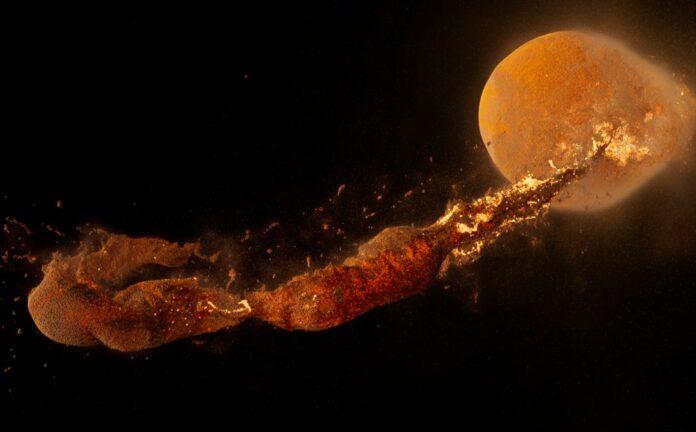Using the most in-depth supercomputer simulations to date, researchers from Durham University’s Institute for Computational Cosmology found that a Moon-like body may have been placed into orbit around Earth shortly after a major impact.
In their quest for possible scenarios that could explain the current Earth-Moon system, the researchers simulated hundreds of different impacts, changing the angle and speed of the crash as well as the masses and spins of the two impacting bodies.
These computations were executed on the DiRAC Memory Intensive service (“COSMA”), operated by Durham University on behalf of the DiRAC High-Performance Computing facility, using the SWIFT open-source simulation code.
Researchers were able to find details on large-scale collisions that had previously been inaccessible due to a lack of computer capability.
Only high-resolution simulations generated the satellite resembling the Moon, and the additional information revealed that its outer layers included more material originating from Earth.
If a significant portion of the Moon formed shortly after the massive impact, this could also imply that less of the Moon melted during its development, contrary to the conventional theory that the Moon evolved within a debris disk around Earth.
Depending on how the Moon solidified after it was formed, these theories should predict different structures inside the Moon.
“This formation route could help explain the similarity in isotopic composition between the lunar rocks returned by the Apollo astronauts and Earth’s mantle,” said co-author Vincent Eke. “There may also be observable consequences for the thickness of the lunar crust, which would allow us to pin down further the type of collision that took place.”
Also, they found that even when a satellite passes so close to Earth that it might be expected to be destroyed by the “tidal forces” of Earth’s gravity, the satellite can not only stay together, but it can also be pushed into a wider orbit that keeps it safe from destruction in the future.
“This opens up a whole new range of possible starting places for the Moon’s evolution,” added lead author Jacob Kegerreis.
“We went into this project not knowing exactly what the outcomes of these very high-resolution simulations would be.
“So, on top of the big eye-opener that standard resolutions can give you wrong answers, it was extra exciting that the new results could include a tantalisingly Moon-like satellite in orbit.”
The early Earth and a Mars-sized object known as Theia are believed to have collided 4.5 billion years ago, resulting in the formation of the Moon.
Most theories say that the Moon was made when the debris from this impact slowly built up over time.
However, examinations of lunar rocks suggest that their composition is similar to that of the Earth’s mantle, whereas the collision produces debris that comes primarily from Theia, challenging this.
This “immediate-satellite” scenario opens up new possibilities for the initial lunar orbit and for what the Moon is made of and how it is put together inside.
Future lunar missions should shed light on the nature of the huge impact that created the Moon and, by extension, the Earth.
Scientists from NASA’s Ames Research Center and the University of Glasgow in the UK were on the research team. The results of their simulations have been published in the Astrophysical Journal Letters.
A DiRAC Director’s Discretionary Time award and a Science and Technology Facilities Council (STFC) grant both contributed to the research’s financial assistance.
Image Credit: Dr Jacob Kegerreis
You were reading: New Hypothesis: What Placed Moon Into Orbit Around Earth
